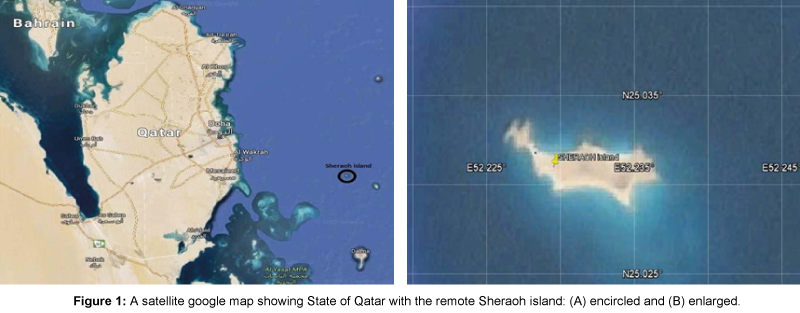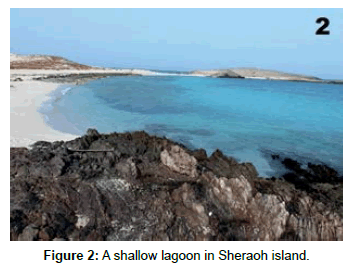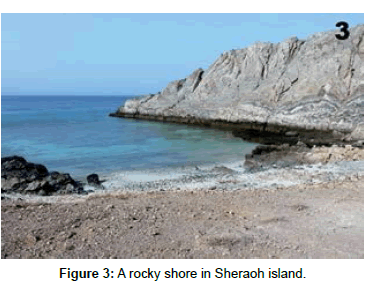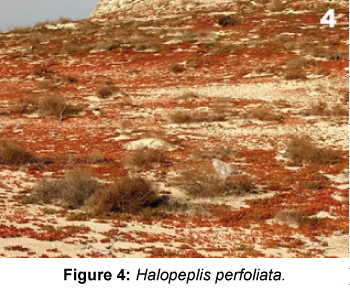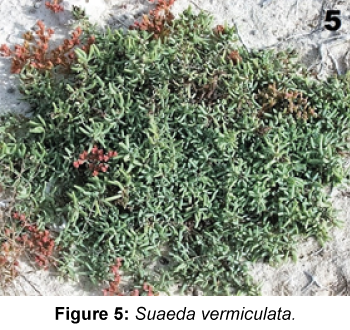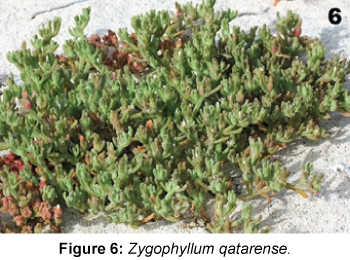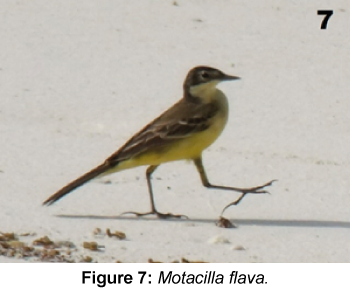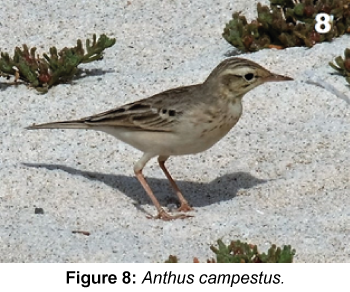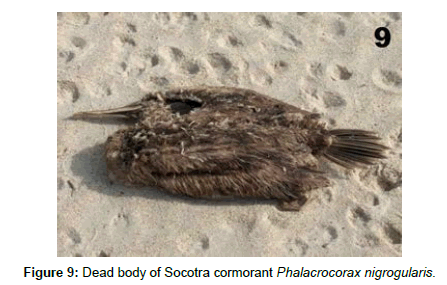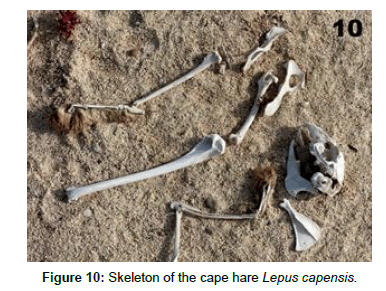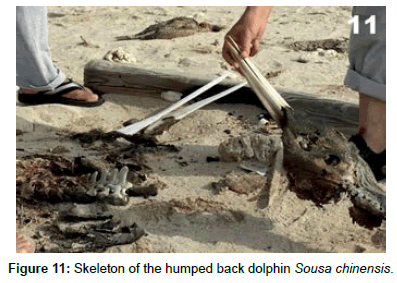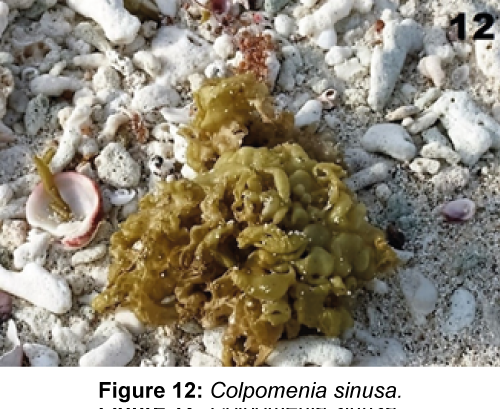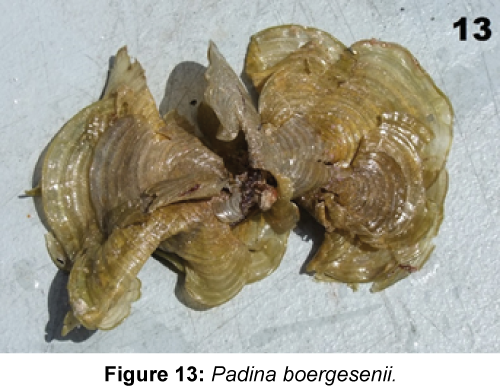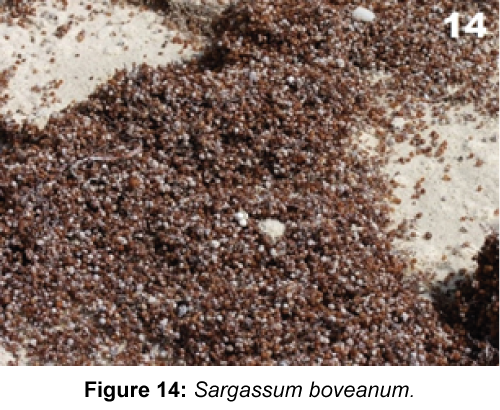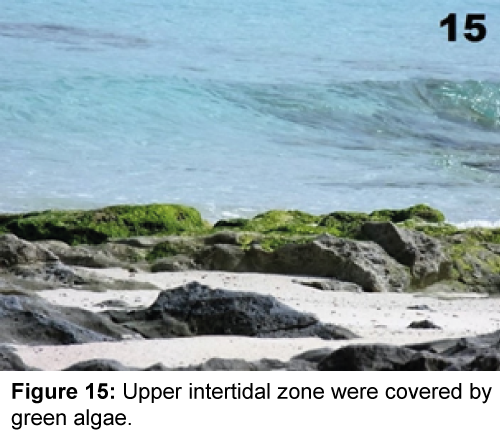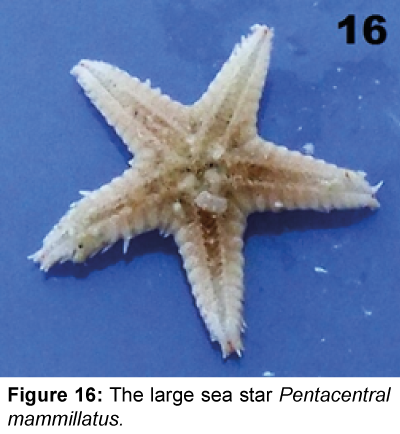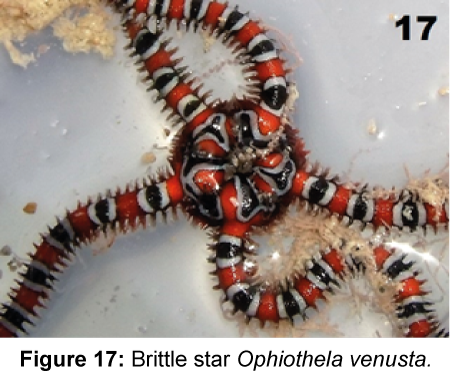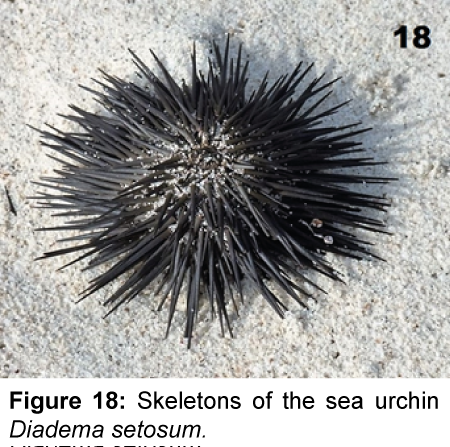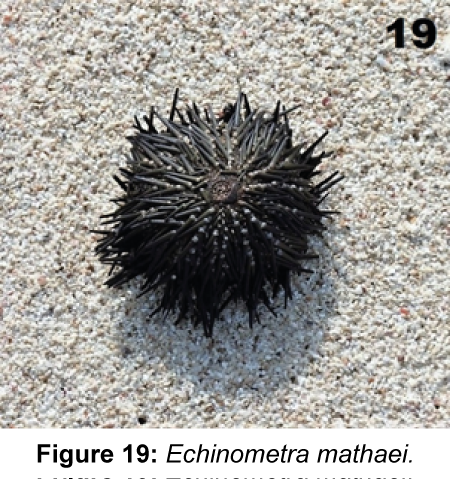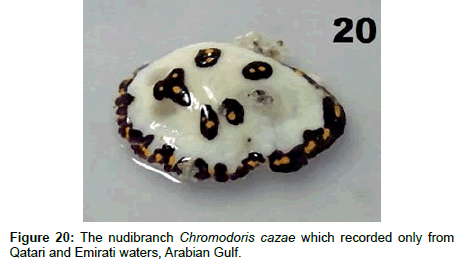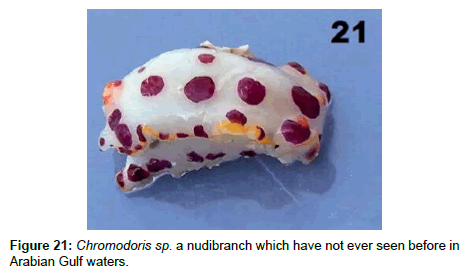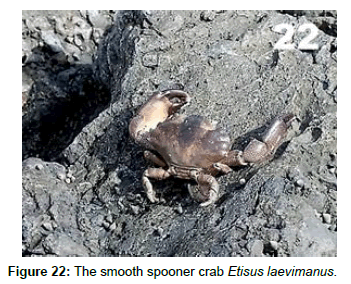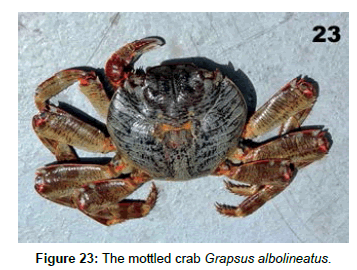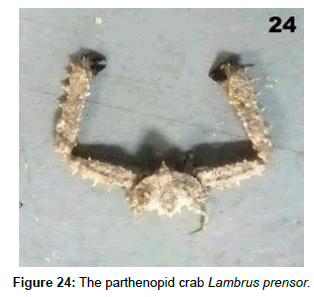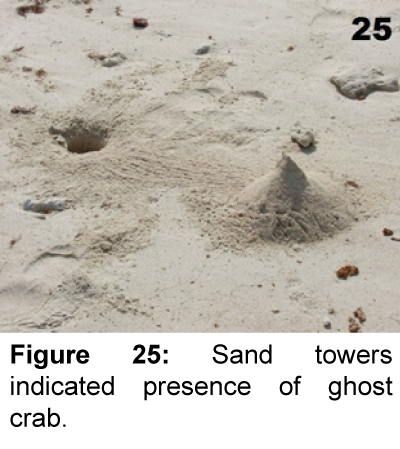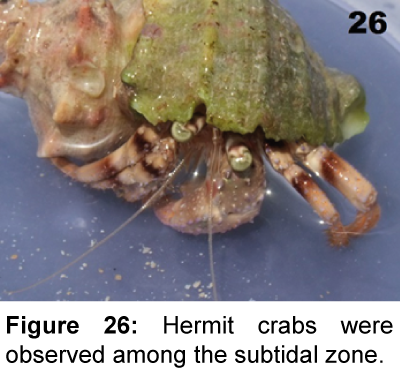Research Article Open Access
Exploring Sheraoh Island at South-Eastern Qatar: First Distributional Records of Some Inland and Offshore Biota with Annotated Checklist
Mahmoud M Kardousha*, Abdulrahman Al-Muftah and Jassim A Al-Khayat
Department of Biological and Environmental Sciences, Qatar University, Doha, Qatar
- *Corresponding Author:
- Mahmoud M Kardousha
Department of Biological and Environmental Sciences
Qatar University, Doha, PB Box 2713, Qatar
Tel: +974- 44034540
E-mail: mkardousha@qu.edu.qa
Received date: May 03, 2016; Accepted date: May 13, 2016; Published date: May 23, 2016
Citation: Kardousha MM, Al-Muftah A, Al-Khayat JA (2016) Exploring Sheraoh Island at South-Eastern Qatar: First Distributional Records of Some Inland and Offshore Biota with Annotated Checklist. J Marine Sci Res Dev 6:191. doi:10.4172/2155-9910.1000191
Copyright: © 2016 Kardousha MM, et al. This is an open-access article distributed under the terms of the Creative Commons Attribution License, which permits unrestricted use, distribution, and reproduction in any medium, provided the original author and source are credited.
Visit for more related articles at Journal of Marine Science: Research & Development
Abstract
Sheraoh island is the most remote among Qatari islands, nearly 73.5 km south-eastern of the mainland of the peninsula. In March 2010, a preliminary general survey of the species was conducted. Observations were made partly by wading and snorkeling in the intertidal zone and partly by surveying the inland habitats. In total the 31 species were recorded, 4 species of halophyte plants: Halopeplis perfoliata, Suaeda vermiculata, Salsola baryosoma and Zygophyllum qatarense, one unexpected terrestrial mammal: the cape hare Lepus capensis, 2 species of visiting birds: Motacilla flava and Anthus campestus and one species of sea bird. Phalacrocorax nigrogularis, one dolphin species: Sousa chinensis. The largest richness was found in the marine habitats, 3 species of sea weeds: Colpomenia sinusa, Padina boergesenii and Sargassum boveanum, 3 species of corals: Anomastraea irregularis, Platygyra lamellina and Porites harrisoni, 2 species of nudibranchs: Chromodoris cazae and Chromodoris sp. (unidentified)., 4 crab species: Hermit crab (unidentified), Etisus laevimanus, Grapsus albolineatus and Lambrus prensor, 4 species of echinoderms: Pentacentral mammillatus, Ophiothela venusta, Diadema setosum and Echinometra mathaei, 5 species of bony fish: Doryrhamphus sp. (larva), Cypserulus oligolepis, Lethrinus nebulosus, Cephalopholis miniatus and Hemiramphus marginatus, one species of sea snakes: Hydrophis sp. The most striking result is to collect an unknown nudibranch species and to report the cape hare which is unexpected inhabitant. All figures of this study are published for the first time in Qatar.
Keywords
Arabian Gulf; Qatari Islands; Sheraoh island; Marine Biota; Nudibranchs; Cape hare
Introduction
Although there is a growing number of marine ecosystem studies of Qatari waters, the islands have not received much attention. There have been a few publications on island’ biodiversity in the region, but with the exception of recent studies on the Qatari lizards [1] and vegetation [2], there are no (to our knowledge) first hand records of biodiversity in Sheraoh island except few observations have been recorded by some visitors [3]. Islands are important priorities for biodiversity conservation that hold more than oneâ┬?┬Éfifth of the world’s plant species and about oneâ┬?┬Équarter of the world’s threatened mammals and onethird of the world’s threatened birds [4]. In Qatar, the most prominent islands are located in the north and eastern side of Qatari peninsula. They include Rakan island, Halul island, Alâ┬?┬ÉAaliya island, Alâ┬?┬ÉSafliah island, Alâ┬?┬ÉAshat island and Sheraoh island. They play a crucial role as resting and breeding sites for different types of seabirds, nesting sites for the green and hawksbill turtles and some of them harbor coral reefs around which host a highly rich diversity of marine species. There is a growing number of studies focusing on islands biodiversity in Qatar. Vegetation (Halul island [2], lizards (three islands were investigated: Halul, Alâ┬?┬ÉAlia and Alâ┬?┬ÉSafliyah [1] and the coral reefs and associated biota of Halul and Alâ┬?┬ÉSafliyah islands [5,6]. In addition, Halul island is a very important island for nesting hawksbill turtles and different sea birds [3]. The biodiversity of Sheraoh island had never been studied and the only information available is visitor observations related to nesting activities of hawksbill turtles [3]. Thus, the current study is the first biodiversity survey of the island. There is a need of further research to help in setting a conservation agenda for the wild life of Arabian Gulf islands.
Materials and Methods
Qatari islands
The archipelago of Qatar peninsula, south of Arabian Gulf, is located between the latitude 24° 27’ and 26° 10’ North and longitudes 50° 45’ and 51° 40’ East with an area of 11,521 km2. The most prominent islands are located north, northâ┬?┬Éeastern and southâ┬?┬Éeastern sides of the peninsula. summarizes the Qatari islands with its latitudes and longitudes. The Sheraoh island is the most remote island in the southeastern side (Figure 1). It is located at the far margin of Qatari waters. The island has different biotypes including rocky shores, intertidal and subtidal sand banks, shallow lagoons and coastal sand dunes (Figures 2 and 3) (Table 1).
| Name | Latitude in Decimal Degrees | Longitude in Decimal Degrees |
|---|---|---|
| RAKAN island | 26.175723° | 51.220295° |
| HALUL island | 25.673681° | 52.410462° |
| Al-AALIYA island | 25.403958° | 51.568908° |
| Al-SAFLIA island | 25.346331° | 51.576800° |
| PALM TREE island | 25.339780° | 51.533572° |
| OLD PALM TREE | 25.305338° | 51.527821° |
| BANANA islands | 25.297635° | 51.643587° |
| PEARL islands | 25.371761° | 51.559459° |
| Al-ASHAT islands | 24.751651° | 51.609290° |
| SHERAOH island | 25.030992° | 52.229545° |
Table 1: The different prominent Qatari islands with latitudes and longitudes.
Two days’ cruise to sheraoh island
The observations were made during 2 days’ field work in March 2010. The survey was conducted partly by wading and snorkeling in the intertidal zone and by surveying the inland habitats. Two benthic samples were collected offshore. Samples were preserved in plastic collection jars containing 5% seawaterâ┬?┬Édiluted formalin, brought to the laboratory, sorted, and identified. Some specimens were photographed in situ. All specimens were investigated by using Stereoâ┬?┬Émicroscope and identified based on the available atlases, field guides and publications such as marine biota [7], sea shore organisms [8], fishes [9], halophytes [10] and corals [11,12].
Results
A total of 32 species were collected/ encountered along the inland, coastal, and tidal areas of the island during the expedition with different groups and species (Table 2).
| Collected and observed Biotypes | Related Biotypes of Arabian Gulf coasts |
|---|---|
| Phaeophyte Algae: Scytosiphonaceae - Colpomenia sinusa (Figure 12) Dictyotaceae - Padina boergesenii (Figure 13) - Sargassum boveanum |
The 3 species of these Phaeophytes are commonly distributed in all Arabian Gulf coasts including Qatar |
| Halophyte plants: Chenopodiaceae - Halopeplis perfoliata (Figure 4) - Suaeda vermiculata, (Figure 5) - Salsola baryosoma - Zygophyllum qatarense (Figure 6) |
The 4 species of these halophytes are dominated in all Arabian Gulf countries including Qatar |
| Corals: Siderastreidae - Anomastraea irregularis (Figure 5) Faviidae - Platygyra lamellina Poritidae - Porites harrisoni |
Commonly distributed and recorded from all AG waters including Qatar |
| Nudibranch Molluscans: Chromodorididae - Chromodoris cazae (Figure 20) - Chromodoris sp. (Figure 21) |
Chromodoris cazae is commonly distributed only in waters of United Arab Emirates and Qatar. the second un-identified species is observed for the first time from Arabian Gulf waters. |
| Decapod Crustacea: Grapsidae - Grapsus albolineatus (Figure 23) Xanthidae - Etisus laevimanus (Figure 22) Parthenopidae - Lambrus prensor (Figure 24) - Hermit crab (Figure 26 ) |
Commonly distributed in Arabian Gulf |
| Echinoderms: Oriasteridae - Pentacentral mammillatus (Figure 16) Ophiotrichidae - Ophiothela venusta (Figure 17) Diadematidae - Diadema setosum (Figure 18) Echinometridae - Echinometra mathaei (Figure 19) |
Commonly distributed in Arabian Gulf waters |
| Bony Fish: Exocoetidae - Cypserulus oligolepis Syngnathidae - Doryrhamphus sp. (larva) Lethrinidae - Lethrinus nebulosus Serranidae - Cepahlopholis miniata Hemiramphidae - Hemiramphus marginatus |
Commonly distributed in Arabian Gulf waters |
| Reptiles: Hydrophis sp. |
It common inhabitant in Arabian Gulf and Indian ocean |
| Birds: Phalacrocoracidae - Phalacrocorax nigrogularis (Figure 9) Motacillidae - Motacilla flava (Figure 7) - Anthus campestus (Figure 8) |
Frequently seen |
| Mammals: Delphinide - Sousa chinensis (Figure 11) Leporidae - Lepus capensis (Figure 10) |
Sousa chinensis is a common member ofmarine mammals fauna in the Arabian Gulf. The desert cape hare Lepus capensis is an unexpected inhabitant on this remote island. |
Table 2: An annotated list of observed and collected Biota from Sheraoh Island, southeastern of Qatar in March 2010.
Inland assemblage
The vegetation of the island was found to be dominated by halophyte communities with Halopeplis perfoliata (Figure 4), Suaeda vermiculata (Figure 5), Salsola baryosoma and Zygophyllum qatarense (Figure 6).
• Birds
Two types of visitor birds were observed, the western yellow wagtail Motacilla flava (Figure 7), and Tawny Pipit Anthus campestus (Figure 8). A dead body of Socotra cormorant Phalacrocorax nigrogularis was also found (Figure 9).
• Mammals
One unexpected mammalian species, the cape hare Lepus capensis was seen running very fast and camouflaged under shrubs. A discovered skeleton with stiff tufts of hairs between the pads of the feet obviously indicating that the Cape hare is a common inhabitant on the island (Figure 10). A dolphin skeleton was also found with wellâ┬?┬Édefined long beak and prominent teeth, the upper jaw is shorter than the lower and backbone is humped. These features characterize the endoâ┬?┬Épacific humped back dolphin Sousa chinensis (Figure 11).
Coastal area assemblage
Along the coastal area, many pieces of coral skeletons were observed scattered everywhere which indicated the dominancy of three species, Anomastraea irregularis, Platygyra lamellina and Porites harrisoni. The brown algae were plentiful along the coastal area and three species were dominated, Colpomenia sinusa (Figure 12), Padina boergesenii (Figure 13) and Sargassum boveanum (Figure 14). Rocks in the upper intertidal zone were covered by green algae (Figure 15).
Intertidal and subtidal biotopes
The assemblage of intertidal and subtidal diversity was found highly enriched by different types of marine biota.
• Echinoderms
Two sea stars were commonly observed, the large sea star Pentacentral mammillatus (Figure 16) and the brittle star Ophiothela venusta (Figure 17). Similarly, skeletons of the sea urchin Diadema setosum (Figure 18) and Echinometra mathaei were also common (Figure 19).
• Nudibranchs
Two species of nudibranchs were collected from subtidal zone, Chromodoris cazae (Figure 20) and unâ┬?┬Éspecified nudibranch related to genus Chromodoris which is characterized by prominent red spots and yellow margin (Figure 21).
• Crustacea (Decapods)
The decapods Etisus laevimanus (Figure 22), Grapsus albolineatus (Figure 23) and Lambrus prensor (Figure 24) were common in the tidal and intertidal zones and were observed invading sandy and rocky coastal areas. Sand towers indicated presence of ghost crab (Figure 25). In addition, Hermit crabs were observed among the subtidal zone (Figure 26).
Offshore biotype
Five species of bony fish was encountered, a larval stage of pipe fish Doryrhamphus sp., flying fish Cypserulus oligolepis, Lethrinus nebulosus, Cephalopholis miniatus and Hemiramphus marginatus. One marine reptile was also observed from the vessel, the common Arabian Gulf sea snakes, Hydrophis sp.
Discussion
Qatari islands are numerous, and most of them are located nearshore of the main land of the peninsula. The most remote ones are Halul and Sheraoh islands which are located at northeastern and southeastern of Qatar respectively. The islands are usually flat, made of calcareous rock and covered by sand. There is very limited information available on Sheraoh island, although, it is described as a heaven for sea birds, nesting turtles specially the hawked bill types and small fringed reefs [3]. Due to its isolation and long distance from the mainland, Sheraoh island has not been visited by many people. Only fishermen and a few others visit the islands and they typically do not stay long. It is not frequently disturbed, the island still maintains very large breeding aggregations of seabirds and sea turtles that have been lost from the mainland and islands near the mainland.
The Arabian Gulf and Qatari islands are extremely important as nesting sites for green and hawksbill turtles. In addition, they are of international importance for seabirds that either breed on the islands or rest there during their annual migrations. The islands also host other species from different biota. The reefs around the islands host a rich diversity of marine species including algae, seagrass, coral, invertebrates, fishes, turtles, and occasionally sea snakes and marine mammals [12].
One of the most interesting species which was collected from Sheraoh’ biota was one unidentified species of nudibranchs that is characterized by prominent red wide spots and yellow margin. It is probably related to Australian species Chromodoris splendida [13]. No organized study of nudibranchs in Qatar has yet been undertaken, however, some collections have been reported. As far as references have revealed, 6 species have been collected from Qatari waters, Chelidonura livida, Flabellina rubrolineatus, Chromodoris annulata, C. obsolete, C. cazae and C. sp16 [14-16]. Chromodoris cazae has only reported from Arabian Gulf, specifically from Qatar and United Arab Emirates [17].
The observations and collecting of coral skeletons and algal remains from intertidal zone indicated that there is a high diversity of corals and algae in the surrounding waters. The skeletal material of coral reefs was found covering a wide area of coastal region. The scattered skeletons were dominated by the brain coral Platygyra lamellina and Porites harrisoni which are the most common Arabian Gulf corals [12,18,19].
Among the more active offshore animal types are the crabs which mostly with high distribution near sand and rocky coastal areas. The rock crab Etisus laevimanus, the mottled crab Grapsus albolineatus and the parthenopid crab Lambrus prensor were common along the coastal area. The prominent erected sand towers of Ghost crabs also common along the coastal area [20].
We were unexpected to find a population of Cape hare Lepus capensis at the island. The cape hare is a common mammalian member of Arabian Peninsula including Qatar. However, its presence in a remote isolated island like Sheraoh was unexpected. The Cape hare has been recorded also from Alâ┬?┬ÉSaflia island [3]. It could be interesting to study this population using DNA techniques to trace its phylogeny. This will empathize if this population was introduced to the island or if it has been isolated for a long period. As islands near the mainland are commonly disturbed by human presence, the remote and isolated Sheraoh island could be used for studies on natural ecosystem on undisturbed islands [20].
Acknowledgement
The authors would like to thank Qatar University for supporting this study. Special thanks go to Dr. Juha Alatalo, Department of Biological and Environmental sciences, Qatar University for his kind revision of the manuscript. Thanks are also extended to Dr. Perumal Balakrishnan, lecturer of GIS in the Department for preparing the location table and the map. We are also grateful to senior students of marine sciences minor for their invaluable help in collecting specimens especially by snorkeling.
Competing Interest
The authors declare that they have no competing interests.
References
- Castilla AM, Al-Kubaisi DJ, Davies C, Mushtak A, Al-Mam WJ, et al. (2014) The lizards living in Qatar. Eds Al-Hemaidi AAM, Al-Hajari SA, Al-Subai K, Mohtar RH, Pelegri JM, Castella AM. Ministry of Environment, Doha, Qatar pp: 349.
- Abulfatih HA, Abdel Bari EM, Alsubaey A, Ibrahim YM (2001) Vegetation of Qatar. Scientific and applied research center (SARC), Qatar University, Al-Ahleia Printing Press, Doha, Qatar pp: 360.
- Gillespie F (2008) Discovering Qatar. Creative writing and photography. Rimons, France pp: 148.
- Hofmann M (2016) IUCN-strategies for the conservation of Island biodiversity, in international conference on island evolution, ecology, and conservation, 18-22 July 2016, University of Azores at Angra do Heroismo, Terceira island, Azores, Portugal.
- AI-Ansi MA, AI- Khayat JA (1999) Preliminary study on coral reef and its associated biota in Qatari waters, Arabian Gulf. Qatar Univ. Sci J., 19: 294-311.
- Al-Khayat JA (2005) Some Macrobenthic Invertebrates in the Qatari Waters, Arabian Gulf. Qatar Univ. Sci. J. 25: 126-136.
- Carpenter KE, Krupp F, Jones DA, Zajonz U (1997) FAO species identification guide for fishery purposes. The living marine resources of Kuwait, Eastern Saudi Arabia, Bahrain, Qatar, and the United Arab Emirates. FAO, Rome pp: 293.
- Jones D (1986) A field guide to the seashores of Kuwait and the Arabian Gulf. University of Kuwait, Kuwait pp: 192.
- Sivasubramaniam K, Ibrahim MA (1982) Common fishes of Qatar (Scientific Atlas of Qatar). Doha modern printing press, Doha, Qatar pp: 172.
- Batanouny KH (1981) Ecology and Flora of Qatar. Aldern press Ltd, Oxford, Great Britain pp: 245.
- Loughland RA, Al-Abdulkader KA (2012) Marine atlas of western Arabian Gulf. Saudi Aramco environmental protection publication, 2nd edition pp: 359.
- Bruckner A, Rowlands G, Riegl B, Purkis S, Williams A, et al. (2012) Atlas of Saudi Arabian Red Sea Marine Habitats. Khaled bin Sultan Living Oceans Foundation pp: 273.
- RudmanWB (1983a) TheChromodorididae(Opisthobranchia:Mollusca) of the lndo- WestPacific: Chromodoris splendida, C. as groups. Zoological J of the Linnaean Society 78: 105-173.
- Qatar Natural History Group (QNHG) (2007), newsletter, No1.
- Rudman WB (2007) Chromodoris sp 16 [In] Se Slug Forum. Australian Museum, Sydney.
- Macdonald IA (2004) Chromodoris annulata, color markings. [Message in] Sea Slug Forum. Australian Museum.
- Rudman WB (2004) Chromodoris cazae Gosliner and Behrens. [In] Sea Slug Forum. Australian Museum, Sydney.
- Basson PW, Burchard JE, Hardy JT, Price ARG (1981) Biotopes of the western Arabian Gulf (Marine life and environments of Saudi Arabia) Shenval 80, Harlow, Great Britain pp: 284.
- Kilbane D, Graham B, Mulcahy R, Onder A, Pratt M (2008) Coral relocation for impact mitigation in Northern Qatar. Proceedings of the 11th International Coral Reef Symposium, Ft. Lauderdale, Florida, 7-11 July 2008, Session number 24.
- Giraldes BW, Al-Maslamani I, Chatting M, Smyth D (2015) Marine collection in Qatar - basis for biodiversity management, Qatar University Life Science Symposium 2015.
Relevant Topics
- Algal Blooms
- Blue Carbon Sequestration
- Brackish Water
- Catfish
- Coral Bleaching
- Coral Reefs
- Deep Sea Fish
- Deep Sea Mining
- Ichthyoplankton
- Mangrove Ecosystem
- Marine Engineering
- Marine Fisheries
- Marine Mammal Research
- Marine Microbiome Analysis
- Marine Pollution
- Marine Reptiles
- Marine Science
- Ocean Currents
- Photoendosymbiosis
- Reef Biology
- Sea Food
- Sea Grass
- Sea Transportation
- Seaweed
Recommended Journals
Article Tools
Article Usage
- Total views: 13033
- [From(publication date):
June-2016 - Mar 31, 2025] - Breakdown by view type
- HTML page views : 12113
- PDF downloads : 920

